Key takeaways:
- Mother’s Day websites not only offer gift ideas but also foster emotional connections and community sharing through personal stories and DIY projects.
- Participating in DIY craft swaps enhances creativity, builds personal connections, and provides a platform for sharing artistic expressions among crafters.
- Effective organization of craft swaps involves clear guidelines, engaging participants in the setup, and creating a welcoming atmosphere that encourages sharing and connection.
- Building anticipation before events and maintaining post-swap engagement strengthens the sense of community and belonging among participants.
Overview of Mother’s Day Websites
Mother’s Day websites serve as a treasure trove of ideas and inspiration, catering not only to gift-giving but also to the emotional connections we cherish. I remember browsing through various sites last year, sifting through heartfelt DIY project ideas that would truly resonate with my mom’s personality. It struck me—how can a simple handmade gift carry so much meaning?
Many of these platforms offer a mix of resources, from creative gift suggestions to personal stories that evoke nostalgia and warmth. I often find myself wondering what makes each mother’s experience unique and how these websites help capture those boundless emotions. They often provide tips on how to craft the perfect message or presentation that speaks to each mother’s character and interests.
Additionally, they’re not just about products; they foster community through shared experiences. I was amazed by how many people took the time to share their own stories and insights, making it feel less like a shopping spree and more like an intimate gathering. Isn’t it wonderful to think that one small act—like participating in a craft swap—could create such a hive of creativity and connection?
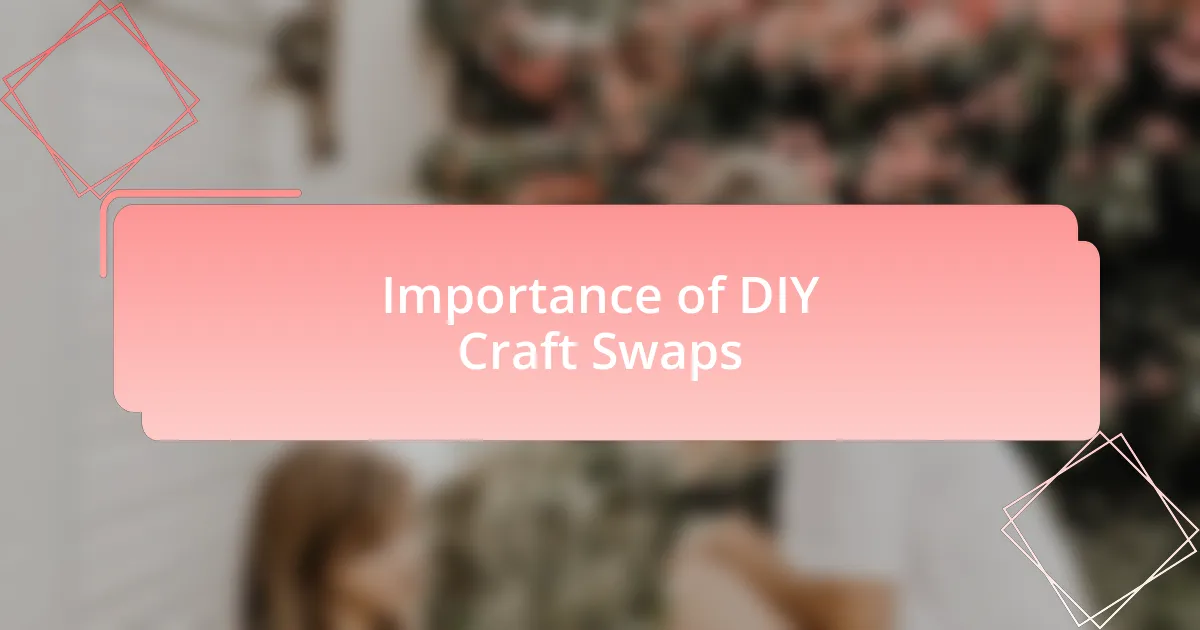
Importance of DIY Craft Swaps
Participating in a DIY craft swap can be an eye-opening experience. I still recall the excitement I felt when I first traded handmade items with fellow crafters—each piece held a story and reflected personal creativity. It’s incredible how swapping these creations not only allows us to exchange materials but also fosters a deeper appreciation for the diverse artistic expressions within our community.
One of the most significant aspects of DIY craft swaps is their ability to strengthen bonds among participants. I remember bonding with a new friend over our shared love for upcycling materials—each of us was thrilled to see how a simple item could be transformed into something beautiful and meaningful. Isn’t it fascinating that through crafting, we can connect with others on such a personal level?
Moreover, these events often ignite inspiration and new ideas. When I received a uniquely crafted piece in return for one of my projects, it fueled my creativity and sparked a flurry of new projects! This exchange reminds us that collaboration enhances our skills and encourages us to think outside the box. Isn’t it amazing how a little act of sharing can lead to boundless creativity?
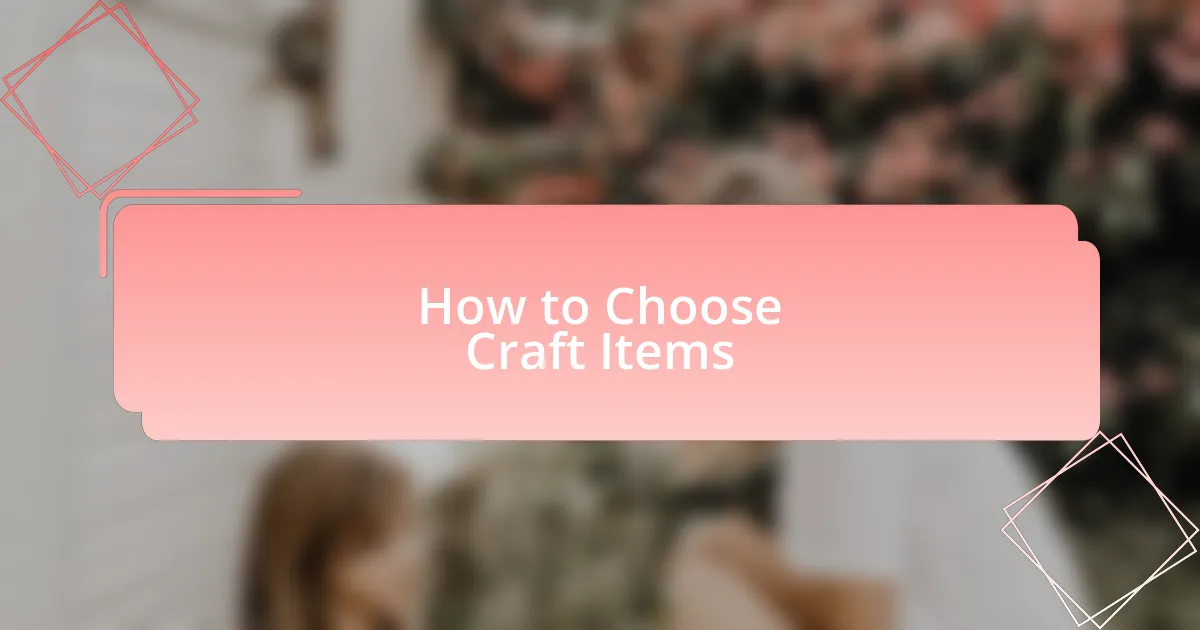
How to Choose Craft Items
Choosing the right craft items for a swap can feel overwhelming, but I’ve learned to focus on what truly inspires me. For instance, I often select materials that reflect my style, like vibrant fabrics or unique embellishments that spark joy every time I see them. Have you ever noticed how certain colors or textures just ignite your creativity? Finding those pieces that speak to your emotions encourages fellow crafters to engage with your offerings more deeply.
Another approach I take is to consider the needs and preferences of the group. Over the years, I’ve made it a point to chat with other participants before the swap to gauge their interests. Once, I discovered that many loved eco-friendly materials. So, I made it a goal to incorporate recycled items into my selection. This not only made my contribution unique but helped create a theme that resonated with everyone involved.
Ultimately, I believe it’s essential to select items that you would be excited to trade for. When I choose something I’m passionate about, it shines through in the swap. I remember giving away a handmade journal, and the joy on the recipient’s face was priceless. Isn’t that what crafts are all about—creating joy and connection?
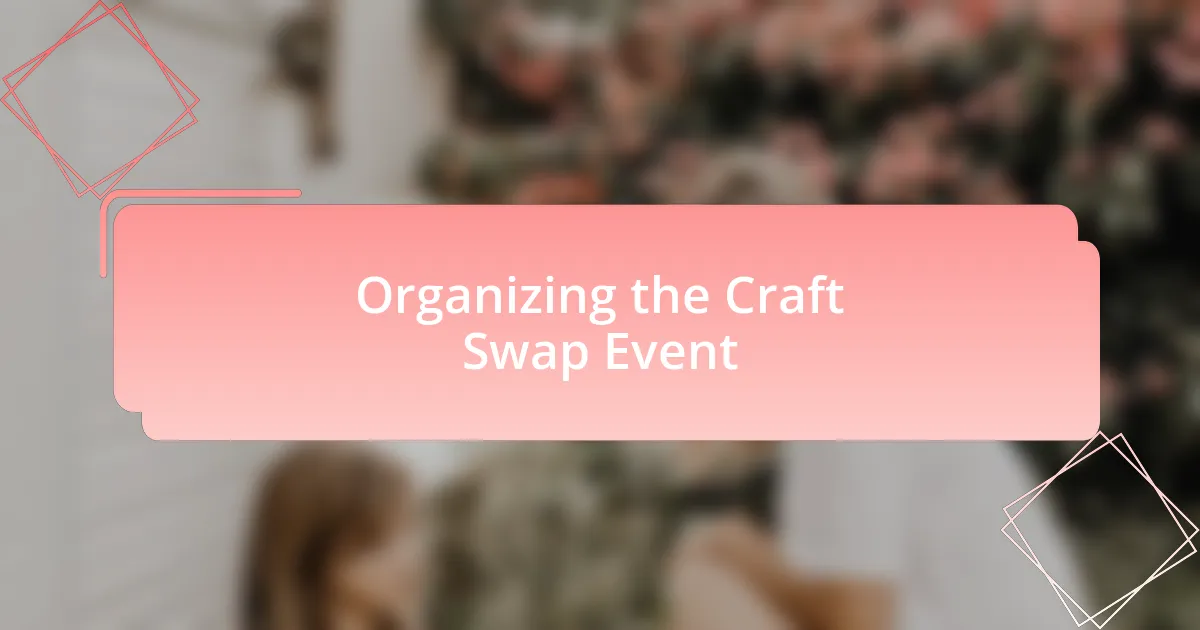
Organizing the Craft Swap Event
When organizing the craft swap event, I quickly realized the importance of the venue. I once hosted a swap in my living room, but that space was quickly overwhelmed by excited participants and colorful creations. Finding a spacious and inviting location allows for movement and interaction, making the event feel more festive. Have you ever walked into a room filled with creativity and companionship? It truly sets the tone for a successful gathering.
As I planned the event, I made it a point to create a sense of camaraderie among attendees. I set up a communal table where participants could display their items and a cozy corner for casual chats. I distinctly remember when a fellow crafter shared her story behind a handmade gift. The whole atmosphere transformed; we felt like a community rather than just individuals exchanging items. Wouldn’t you agree that these moments of connection make all the effort worth it?
I found it helpful to implement a structured yet flexible format for the swap. One year, I introduced a timed trading session, which sparked a delightful energy in the room. It was exhilarating to watch everyone rush to grab their favorite pieces as the timer ticked down. The excitement was contagious, and I cherished seeing how it encouraged creativity and collaboration among participants. In my experience, blending organization with a playful spirit can create an unforgettable craft swap event.
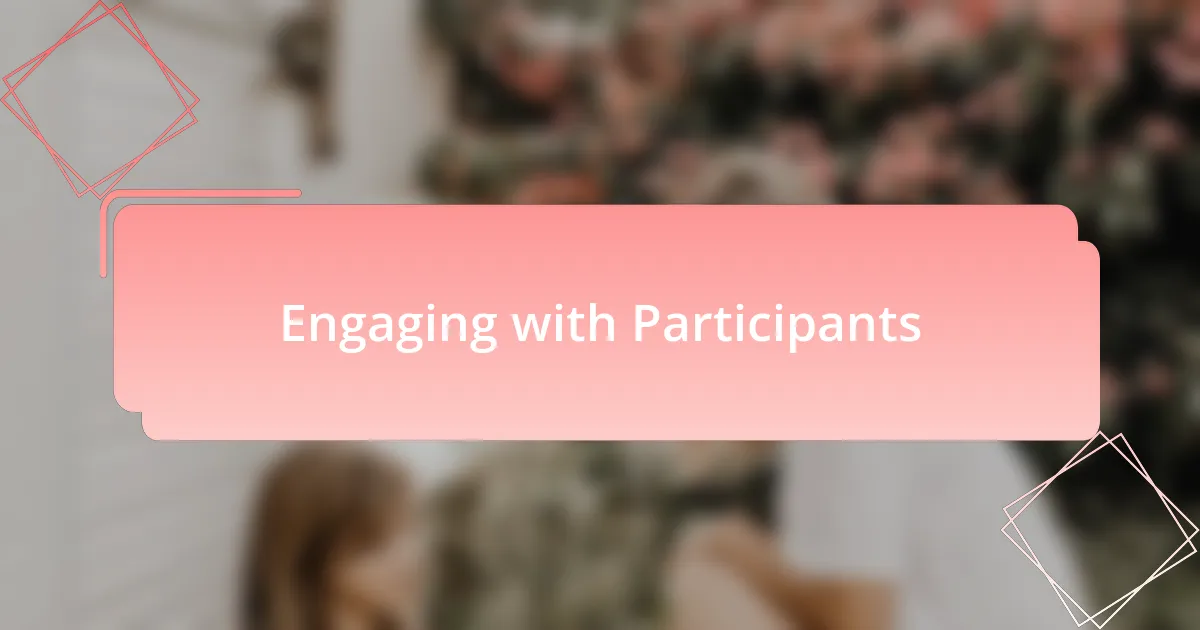
Engaging with Participants
To keep participants engaged, I found it essential to communicate often and clearly before the event. I remember sending out cheerful email blasts with sneak peeks of the crafts that would be available for swapping. It was amazing how a little anticipation could spark excitement; by the time the swap date arrived, people were already chatting about their creations and making plans for what they hoped to bring home. Isn’t it fascinating how building anticipation can foster a sense of community even before the event starts?
During the swap, I tried to create interactive experiences that encouraged everyone to share their crafting stories. At one event, I set up a mini “Show and Tell” where participants had a chance to talk about their favorite item and its backstory. I could see how this not only made them proud but also inspired others. Have you noticed how sharing personal stories can ignite passion and connection? It certainly adds a unique layer to the entire swap experience.
I’ve learned that follow-up engagement is just as crucial as pre-event excitement. After one swap, I sent out a survey to gather feedback on what participants loved and what could be improved. The responses were enlightening, but what truly moved me were the heartfelt messages of gratitude that came pouring in. Knowing that my efforts made a lasting impact on others’ crafting journeys felt incredible. Why do you think maintaining that connection matters? To me, it reinforces the feeling of belonging to a creative family.

Tips for Successful Swaps
When organizing a successful craft swap, it’s vital to establish clear guidelines for what can be exchanged. Early in my experience, not having a defined boundary led to confusion, with items ranging from small trinkets to large projects that overwhelmed the space. Setting specific categories—for example, yarn, paper crafts, or upcycled materials—ensures everyone knows what to bring and helps keep the swap organized. Isn’t it comforting when everyone knows what to expect?
I’ve discovered that involving everyone in the setup process can make a huge difference. At the last swap I organized, I encouraged participants to help arrange the tables. This simple act of teamwork transformed the event atmosphere. It felt like a communal effort, and as we chatted while preparing, friendships blossomed. Isn’t it amazing how such small acts can enhance the overall experience and create lasting memories?
Another crucial tip I found is to mix up the types of crafts available to cater to various skill levels. I recall one participant who was nervous about bringing her first-ever knitted item, yet it turned out to be a hit with more experienced crafters. They enthusiastically shared tips on improving her technique. This idea of inclusivity not only fosters a supportive environment but also inspires creativity among all participants, don’t you think?
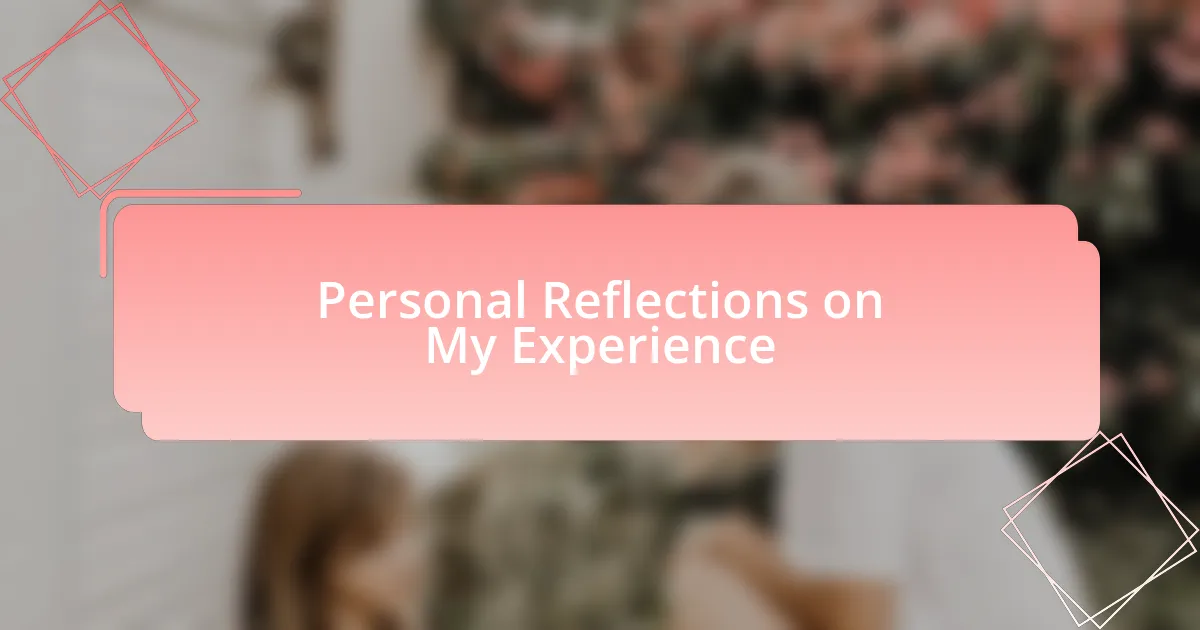
Personal Reflections on My Experience
Reflecting on my craft swap experiences, I often remember the moment when our planned activities unexpectedly morphed into shared storytelling sessions. I’ll never forget the joy on everyone’s faces as they recounted the stories behind their pieces. It reminded me that crafting isn’t just about the physical items; it’s also about the memories and connections we create along the way. Isn’t it fascinating how crafts can spark such deep conversations?
During these events, I noticed how the atmosphere could shift with a simple change in perspective. One time, a participant hesitated to share her work because she deemed it “not good enough.” Encouraging her to appreciate her unique style not only boosted her confidence but also inspired others to feel the same. Have you ever found yourself in such a moment, where uplifting someone else also uplifts you?
I’ll always cherish the friendships formed through these swaps. After one event, I received a heartfelt thank-you note from a participant who connected with another attendee over their mutual love for vintage fabrics. It struck me how these craft swaps don’t just exchange items; they forge bonds that extend beyond the event itself. Isn’t that a beautiful reminder of the power of community?